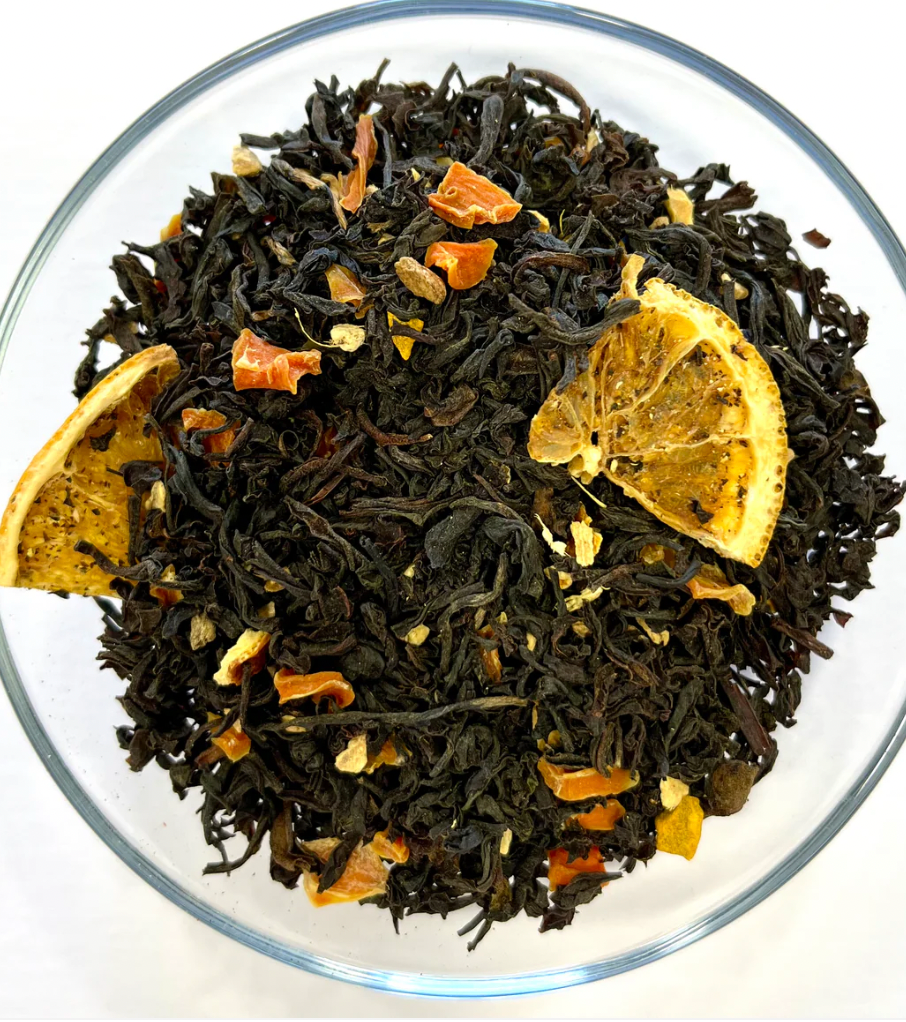It’s 2024 and there’s a twist on every classic, including ancient tea’s. Maybe you’ve been an avid breakfast-tea-drinker, classy green-tea-sipper, or elegant-white-tea enthusiast for a lifetime, do you think we could convince you to try a modern twist?
Let’s start with the infamous classic black tea.
Where did the story of black tea all start?
Relatively recently in human history, surprisingly. China is typically credited with the hefty title ‘Origin of tea’, they had been drinking a type of fermented black tea known as pu’erh, along with oolong teas and green teas for many hundreds of years, potentially back to about the year 300(AD).
‘Black tea’ as we know it today, was a name popularised by British and Dutch traders bringing commodities back from the East in the 17th century. The concept of black tea evolved in China somewhere around the 15th century, and is known as ‘red tea’, not black.
It’s created by allowing the leaves full oxidation, which results in that darker colour.

And, what are some modern twists on the black tea classic?
Inspired by the spices of India, our full-bodied chai-spiced black tea with cardamom base, cinnamon, ginger, cloves and red pepper. If you don’t want to venture quite so far with the flavour in your black tea, we also have a more tame, cardamom-spiced black tea.
If the more tame end of modern-twists is where you’d like to stay, our gentle floral infusions like pink-rose black tea with its light and airy aroma, or sweet-vanilla black tea with its heady, heavier, and nostalgic scent, might become your new morning ritual.
And for an even milder twist, our Kenyan black tea freckled with azure cornflowers offers a visually royal experience, but with little alteration to the taste.

Let’s take a look at another ancient classic - the green teas’.
Where did green tea drinking begin?
Green tea has a history dating back over 4,000 years, originating in China. It is believed to have been discovered around 2737 BCE by Emperor Shen Nong when a tea leaf accidentally fell into his boiling water (items simply falling into place seems to be a regular theme of historical discoveries, didn’t Newton experience something similar?)
Over the centuries, green tea became an integral part of Chinese culture, valued for its medicinal properties and health benefits. In the 8th century, monks introduced green tea to Japan, where it quickly became popular and led to the development of the Japanese tea ceremony. Green tea was introduced to Europe in the 16th century, carried over with the black tea by Portuguese and Dutch traders.

And, what are some modern twists on the green tea classic?
If it’s the unique, focusing and energising effect of green tea that you love (caused by the L-theanine content), then you might find ginseng and ginger green tea to be equally, if not more, invigorating. Ginseng doesn’t have caffeine like teas do, but it is known to be gently stimulating.
Want a complete, green-tea revamp? An explorative and daring green tea blend? But still retaining the health and cognitive benefits of green tea? Our ‘Little Buddha’ blend is packed full of colour and fun; aniseed liquorice, sandalwood, red peppercorns, roman chamomile, and exotic papaya and pineapple. One review on this one tells us that they found it ‘smooth with no bite’.
Can you imagine a classic, biting green tea twisted with sweet cherry aroma and floral rose petals? ‘Cherry blossom’ is our fun, Japanese inspired green-tea, which one reviewer suggests tastes like Turkish delight… and we’re inclined to agree!
When it comes to matcha -which is a historical, central role in the ancient Japanese matcha tea ceremony- we’ve sought to enhance the cognitive-supporting benefits of green tea, and added lion’s mane mushroom to our Japanese matcha - a research-backed medicinal mushroom with neuroprotective a cognitive benefits. We source this weird looking mushroom from a local Cornish mushroom grower!
Perhaps neither green tea nor black tea are quite the style for you, perhaps you opt for an elegant and delicate oolong. A refined classic, but even this its 2024 twists!

Where did oolong tea begin?
Oolong tea originated in China during the Tang Dynasty (618-907 CE). It is a traditional Chinese tea that falls between green and black tea in terms of oxidation.
The name "oolong" means "black dragon," reflecting the dark, twisted appearance of the leaves.
Oolong tea became particularly popular in the Fujian and Guangdong provinces, where unique processing techniques were developed. These techniques involve withering the leaves under the sun, partial oxidation, and then curling and twisting the leaves. The production and appreciation of oolong tea spread to Taiwan in the 19th century, where it gained further fame and love.
Today, oolong tea is celebrated for its diverse flavours and complex aromas… and it’s about to get more diverse and complex!
Can you image the delicate,milky nature of oolong twisted with mint leaves and cacao… don’t you think that would taste a little like Mint Choc Chip? One reviewer suggests that this mint-choccy blend tastes like a mint humbug! It contains full, raw chunks of cacao and zingy peppermint leaves that uplift the gentle oolong base.
Not a mint-choc-chip fan? You’re either a chocolate-orange kind of person, or a mint-choc kind of person, and we have a rich Orange oolong too.
With a mixed base of delicate oolong, black tea, and green tea, aromatic jasmine petals, and a twist of orange oil, Orange oolong is warming, clearing, and elegant.

We’d love to hear your ideas for more classic twists! Tell us, what flavours do you think would pair well with green, black, and oolong teas?

